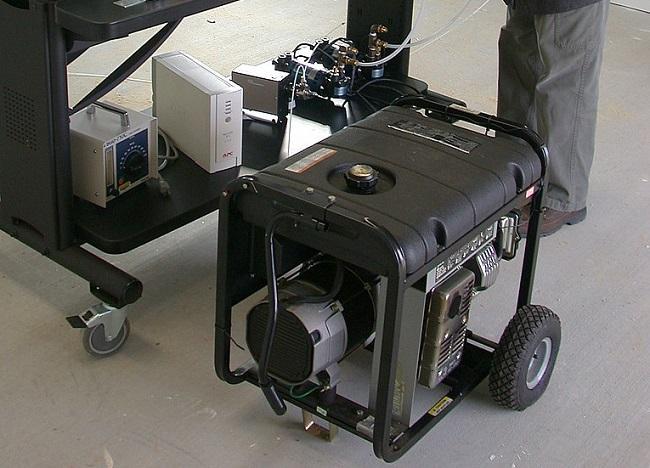Every year in the United States, hundreds of construction workers tragically lose their lives while on the job. A leading cause of these fatalities is the inhalation of harmful chemicals, with carbon monoxide poisoning being the primary culprit. What makes carbon monoxide so dangerous is its stealthy nature – it’s an odorless, tasteless, and colorless gas that can kill within minutes. The good news is that these deaths can be prevented.
The stories you’re about to hear are based on real-life incidents that occurred on construction sites. They serve as harrowing reminders of the deadly consequences of carbon monoxide poisoning, but also as powerful lessons in how employers can provide safer work environments and life-saving protective equipment.
In one case, two workers were renovating the basement of a two-story home. As one worker used a gasoline-powered wet saw to cut a hole in the concrete wall for a window, another worker marked lines for the next window to be cut. The newly cut window holes were sealed, preventing fresh air from entering the basement. Unbeknownst to the workers, the saw’s exhaust, which contained carbon monoxide, was filling the air around them.
After three hours of using the saw intermittently, the worker marking the new window began to experience a headache. She tried to go upstairs for fresh air but collapsed before reaching the top. Her co-worker attempted to help her but quickly became dizzy and collapsed as well. By the time other co-workers discovered them, it was too late. Both workers had succumbed to carbon monoxide poisoning.
This tragedy could have been avoided by implementing several safety measures. First, the workers should not have used a gasoline-powered concrete saw in an enclosed space without proper ventilation. Hydraulic or pneumatic concrete saws, which do not produce carbon monoxide, would have been safer alternatives. Additionally, the presence of a carbon monoxide detector or alarm could have alerted the workers to the invisible danger in the air.
Unfortunately, this is not an isolated incident. Carbon monoxide poisoning can occur with other fuel-powered tools commonly used on construction sites, such as portable generators, space heaters, trowels, and water pumps.
To prevent these senseless deaths, employers must adhere to OSHA’s standards and provide workers with a safe workplace. Implementing safety measures like using carbon monoxide-free tools and ensuring proper ventilation can save lives.
Here are five essential tips to help you reduce the risk of injury when using these powerful tools.
- Ensure Proper Ventilation: One of the main hazards of using gas-powered equipment is the production of carbon monoxide, a colorless, odorless, and tasteless gas that can be lethal in high concentrations. To reduce the risk of carbon monoxide poisoning, always operate gas-powered generators and equipment outdoors, away from doors, windows, and vents to prevent exhaust fumes from entering enclosed spaces. Provide adequate ventilation in work areas and consider using carbon monoxide detectors to monitor air quality.
- Follow Manufacturer’s Instructions: Always read and follow the manufacturer’s instructions for the safe operation and maintenance of your gas-powered equipment. This includes proper setup, fueling, and storage procedures. Failure to follow these guidelines can result in equipment malfunction or accidents, potentially leading to serious injuries.
- Use Personal Protective Equipment (PPE): Depending on the specific equipment you’re using, appropriate PPE may include safety goggles, gloves, earplugs or earmuffs, and steel-toed boots. Wearing the right PPE can significantly reduce the risk of injury from flying debris, noise exposure, and other hazards associated with gas-powered equipment.
- Perform Regular Inspections and Maintenance: Regularly inspect your gas-powered equipment for signs of wear, damage, or malfunction. Check hoses, connections, and seals for leaks or other issues. Keep the equipment clean and well-maintained to ensure optimal performance and minimize the risk of accidents. If you identify any problems, address them immediately and do not use the equipment until it has been repaired or replaced.
- Provide Training and Encourage Safe Work Practices: Educate yourself and your team on the safe operation and handling of gas-powered equipment. This includes proper lifting techniques, awareness of potential hazards, and the importance of communication and teamwork. Encourage a safety-first culture on the job site, and empower workers to report unsafe conditions or practices without fear of retribution.
Remember, taking these precautions on the job could mean the difference between life and death. If you’re an employer or worker in the construction industry, educate yourself and your team about the dangers of carbon monoxide poisoning and the necessary safety measures to prevent it.
By being proactive and putting safety first, we can help ensure that construction workers return home to their families at the end of each day, free from the deadly threat of carbon monoxide poisoning.
References:
- https://commons.wikimedia.org/wiki/File:Gasoline-powered_portable_generators_(5884715763).jpg
- https://www.osha.gov/vtools/construction/carbon-monoxide-fnl-eng-web-transcript


